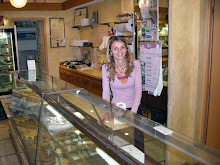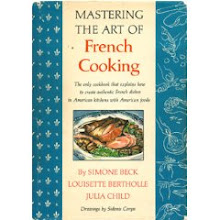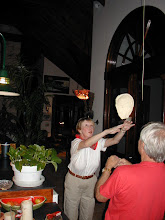Some people are intimidated when it comes to broiling salmon. Don’t be. Broiling is one of the easiest and fastest ways to prepare salmon and it is my preferred method. Plus, if you line your broiling pan with heavy duty foil, there’s practically no clean up necessary. I have used this recipe for years and it has never let me down.
Start with boneless fresh salmon fillets, preferably with the skin left intact. Allow the salmon come to room temperature, drizzle with a little oil, season with salt and pepper, and cook for about 8 to 10 minutes under a pre-heated electric broiler and voila, dinner is ready.
For the oil, I prefer grape seed oil because of its clean, neutral flavor and moderately high smoke point, which is important when you broil. Any other neutral tasting oil, such as canola can be substituted.
I’ve topped my broiled salmon with a peach salsa that includes tomatoes, fresh corn kernels, red onion, crunchy cucumber, and plenty of fresh basil tossed together in lemony vinaigrette. All of the ingredients are readily available at summer farmer’s markets. The cucumber gives the salsa a crunchy surprise. Nectarines could easily be substituted for the peaches.
Never fear broiling salmon again with this super easy method.
Broiled Salmon in an Electric Broiler
Adapted from Pierre Franey, 60 Minute Gourmet – serves 4
1 1/2 pounds boneless fresh salmon fillets, preferably with the skin left intact
2 to 3 teaspoons grape seed oil, or other neutral tasting oil
Kosher salt or sea salt & freshly ground black pepper
Lemon wedges or unsalted butter, optional
Cut the salmon into four pieces approximately the same size and weight. Put salmon on a plate, rub with oil, season with salt & pepper, and allow the salmon to sit at room temperature for 10 to 20 minutes.
Preheat an electric broiler. Arrange the salmon in one layer, skin side down, on an unheated sheet pan lined with heavy duty foil for easy clean-up. Place the salmon under the broiler about six to seven inches from the source of heat. Broil 8 to 10 minutes or just until the pieces are cooked through. It is not necessary to turn the salmon. If salmon starts to get too crispy on the top, change from broil to bake and bake at 400 degrees until done. Do not overcook or the salmon will be dry. Allow to rest for a few minutes (just like you would meat or chicken) on the pan before serving. If you wish to remove the skin, slide a metal spatula between the salmon and the skin after it rests on the pan.
If desired, dot with a tiny bit of unsalted butter or squeeze a few drops of lemon juice on the top. These are not necessary if you are serving the salmon with a salsa.
Peach Salsa
From My Carolina Kitchen – makes 4 servings
4 medium sized tomatoes, cut into small chunks
1 cup chopped European seedless cucumber
1 cup fresh corn kernels, blanched
½ cup chopped red onion
Sea salt and freshly ground black pepper
2 small peaches, peeled, seeded, and cut into small chunks
¼ cup fresh basil leaves, julienned
A sprig of fresh basil for garnish if desired
Vinaigrette:
1 tablespoon freshly squeezed lime or lemon juice
3 tablespoons extra-virgin olive oil
Several dashes of hot sauce such as Tabasco, optional
Place the tomatoes, cucumber, corn, and red onion in a bowl and gently toss with a rubber spatula. Season with salt and pepper. In a jar with a tight fitting lid, combine the vinaigrette ingredients together, shake well, and set aside.
Prepare the peaches and fresh basil and add to the tomato vegetable mixture just before serving. Toss very gently with a rubber spatula, add the vinaigrette. Again toss gently, then taste for seasonings and adjust accordingly. Garnish with a sprig of fresh basil and serve at once.
* * *
This recipe will be linked to On the Menu Monday at Stone Gable, Miz Helen’s Country Kitchen Full Plate Thursday, and Foodie Friday at Rattlebridge Farms.
Eat More Fish










































